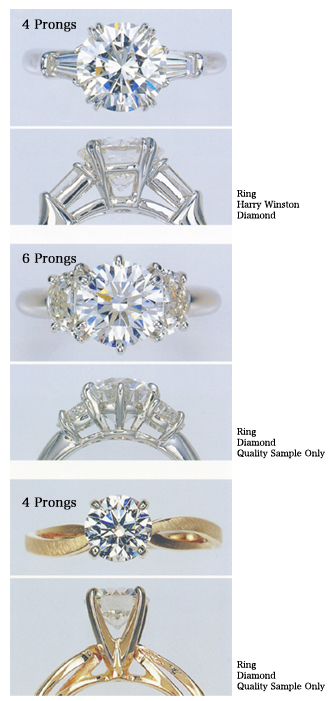THE NUMBER AND
STRENGTH OF PRONGS
The fear of prongs becoming loose and causing precious gemstones to fall out is understandable. In response to this insecurity, six-pronged settings are sometimes used instead of four-pronged ones, or the gemstones can be set in prongs that are thicker than necessary. Becoming overly cautious and not allowing the full beauty of a gemstone to show, however, is regrettable.
Placing the upper bezel high as shown in the top photographs to the right will improve the strength of a four-pronged, 950 platinum setting. Opening the prongs in such a setting would require the application of quite a bit of force. For a larger stone, however, there would also be the option of making the setting a bit thinner, with six prongs.
In the case of four ling, slim prongs without an upper bezel, a strong force against one of the prongs may bend it open and allow the stone to fall out. The same situation in a six-pronged setting will not result in the stone falling out. The ring shown at the bottom is a 14K gold solitaire ring, a common style in the United States. The thin prongs on this ring are made hard to resist bending.
If the same style were made with a platinum/Palladium alloy, one can imagine how the stone would fall out of the setting time and time again. Since the hardness of each type of precious metal is different, the styles used for each one are also different.
|
 |